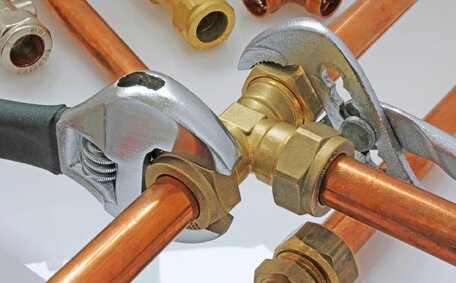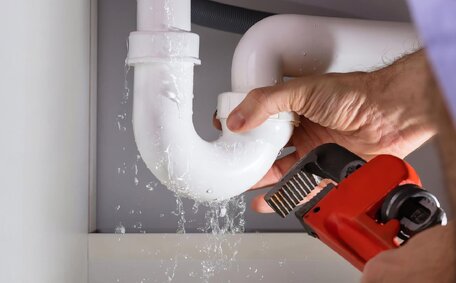Introduction to Pipe Relining
Trenchless pipe relining is a method of repairing blocked drains and damaged pipes without having to excavate. It involves inserting a resin-saturated liner into the existing pipe and curing it in place, ensuring it’s done right so you can get a smooth, jointless 'pipe within a pipe’.
Pipe relining offers several advantages over traditional main sewer line replacement:
- Cost-effective - sewer pipe relining is substantially cheaper than complete replacement.
- Minimal disruption - Minimal excavation - your lawn remains intact, with no damage to landscaping or indoor flooring.
- Time-efficient - your property’s drains can be relined swiftly, often within a single day, and without waiting for materials or excavation.
- Long-lasting - your sewer pipes, once relined, are stronger than before and can last 50 years or more.
Consider pipe relining if you detect damage from blocked drains, ground movement, ageing infrastructure, or tree root incursion. This no-dig method often provides an optimal solution, restoring flow and function without the mess and expense of replacing a broken sewer line.
In this article, we’ll explore early signs that a relined pipe may need attention. Catching pipe issues early prevents problems your pipes might face, allowing for a simpler pipe repair before major disasters develop.
Understanding Warning Signs of Deteriorating Relined Pipes
Maintain vigilance for issues in your sewer system, even after using high-quality pipe relining. Early detection of problems can lead to simpler repairs and prevent severe plumbing emergencies. Watch out for these key signs that suggest your pipes need attention and pipe relining might be necessary:
- Slower draining sinks, tubs or toilets may indicate blockage or tree root infiltration into your pipes.
- Gurgling sounds from your drains may signal partial blockages or air pockets in deteriorating pipes.
- Unpleasant odours near your toilet can suggest sewage gas buildup and pipe deterioration.
- Diminished water pressure can hint at possible obstructions in ageing pipes, adversely affecting hot water systems.
- Cracks and leaks around pipe joints are signs of structural issues within the pipe system.
- Sagging pipes - Gravity can also cause deteriorated drain pipes to sag, reducing flow.
- Clogged fixtures - Sink, tub and toilet backups imply material flaking off the lining.
- Stormwater pipes pooling - Standing water around cleanouts or along the pipe path indicates gaps.
Take note of factors accelerating pipe deterioration, including incorrect installation, ground movement, and constant tree root intrusion. If you notice any of the above warning signs, it’s a signal that your pipes need an inspection right away. The extent damage and the repairs required on your pipe system will only worsen over time if left unaddressed.
Low Water Pressure
It’s advised to contact a professional if you experience low water pressure, as this could indicate compromised relined pipes. Concerns about call-out fees shouldn’t deter you from seeking help. Restricted water flow indicates a partial blockage or break somewhere along the pipe line.
- Buildup of mineral deposits or grease narrowing the pipe interior over time
- Intruding tree roots choking off sections of pipe
- Collapsed or separated pipe joints allowing water to leak out
- Cracks or holes in the pipe walls reducing flow
Low water pressure may limit water usage at your home, affecting daily activities. It is wise to investigate any issues causing weak showers, slow-draining sinks and tubs, and extended laundry and dishwashing times. Prolonged issues increase the likelihood of serious clogs, leaks, or pipe failures.
Should you experience reduced water pressure at your home’s fixtures, possibly indicating an issue with your plumbing pipe, promptly contact a licenced plumber. Utilising camera inspection, pressure testing, and leak detection, experts can determine the cause and verify if pipe relining would resolve the problem.
Unusual Odors
If you begin noticing strange, unpleasant smells coming from your home’s drains or vents, it could be an indication your relined pipes are deteriorating and need attention. Foul odours are a common early warning sign that gases are escaping due to gaps or corrosion within pipes.
Some of the most common sources of drain odours stemming from pipe problems include:
- Corrosion facilitating more particulates to go down drain in older pipes
- Accumulation of greasy residues that rot and stink
- Tree root growth disrupting water flow
- Blockages of solids letting sewage stagnate
- Cracks or holes enabling gases to seep out
The specific smell present can provide clues as to a damaged pipe or another issue. A particularly foul, decaying stench often means organic waste buildup. An earthy, musty smell could mean roots penetrating pipes.
A rotten egg odour inside your drains typically signals deteriorating pipe walls or joints releasing hydrogen sulphide gas.
Have your pipes inspected by a licenced plumber to identify and address the cause, avoiding further damage. Unaddressed issues can lead to sewage backups, overflow into your home, soil contamination in your yard, and costly emergency repairs, potentially affecting your home insurance.
Visible Leaks or Water Damage
Visible water leaks or damage are clear indicators that your relined pipes require attention. Leaking pipes can damage walls, ceilings, and floors with unsightly stains. Signs of leaks include bubbles or drips along joints, puddles around external cleanouts, or soggy areas in your yard tracing the pipe path.
Potential sources of leaks in a deteriorating drain pipe include:
- Cracked or separated pipe joints
- Holes corroded through the pipe lining
- Points where roots have penetrated the piping
- Loose fittings where sections connect
Left unresolved, leaks can intensify over time leading to substantial property damage. Water seeping into the ground under or around your St Ives home can cause sinkholes, foundation issues and landscape erosion.
Should you notice visible plumbing leaks, drips or pipe damage on your property, contacting a professional promptly for a free assessment is recommended. A qualified team can identify leak locations with testing and CCTV pipe inspection, advising on repair solutions to prevent further damage.
Frequent Blockages and Clogs
Frequent drain clogs or backups signify that your relined pipes may be deteriorating. Recurring blockages often point to material flaking off the interior lining, which enables debris, grease, and mineral deposits to accumulate, particularly at bends and joints.
Seek a professional evaluation if you encounter frequent clogs or slow drainage in toilets, sinks or showers, as these can signal breakdown of the relining’s surface; partial obstructions may also form more readily without the lining’s protective barrier. Over time, enough buildup can occur to fully plug fixtures and pipes.
Don’t let your drains back up; take swift action if you notice recurring clogs or sewer issues. A licenced plumber can conduct a camera inspection to identify problem areas, clear obstructions, and recommend drain pipe relining if required to restore smooth, clog-resistant flow.
Pipe Inspections by Licensed Plumbers
Routine inspections by qualified, licensed plumbers are recommended to catch any issues with relined pipes early on. Periodic inspections allow plumbers to thoroughly assess the condition of pipes and spot potential problems through testing and camera examination before they escalate.
During inspections, plumbers evaluate cast iron and other types of pipes.
- Conduct a leak test to check for cracks or holes
- Measure water pressure and flow to identify restrictions
- Use a drain camera to visually inspect the interior of pipes
- Assess joints, connections and pipe alignment
- Check for root intrusion or other obstructions
- Test pipe thickness and integrity
Inspectors can recommend pipe repairs or additional relining based on their findings, advocating for trenchless solutions that preserve pipe functionality and avert severe disasters. Relatively simple relining repairs now can lead to avoiding complete line failure later.
Professional plumbing services should check your home’s relined pipes biennially or whenever warning signs emerge. Preventative maintenance is vital in extending the lifespan of your pipes.
Addressing Concerns About Failing Relined Pipes
During the inspection, the plumber will check for leaks, blockages, pressure issues, pipe alignment problems, root intrusion and other damage. If concerning issues are found, advice on the best repair approach for your pipe may involve selective relining of problem sections or complete pipe relining if the lining has failed when experts came out.
Partial relining is often sufficient if the issues are localised, saving on cost and disruption. But If the pipe lining is too far gone, laying a new pipe via full-scale relining will be needed to restore function and prevent future problems. Your plumber can help analyse the inspection findings and propose suitable solutions.
While the prospect of more plumbing repairs is never welcome, addressing problems proactively can prevent much bigger headaches down the line. Should leaks, blockages or pipe collapses occur due to ignored early warning signs, resulting in water damage or unhealthy sewer gases entering your home, give us call immediately to avoid costly emergency repairs.
By catching issues early and relying on your local trusted plumbing company to diagnose and remedy them, you can maximise the lifetime of your relined pipes and avoid catastrophic failures. Don’t wait until major disasters strike - at the first sign of trouble, please call a trusted local plumber to get your pipes assessed and fixed before it’s too late.
Knowing When It’s Time to Replace a Relined Pipe
When properly maintained, relined pipes can last over 50 years. Nonetheless, there are instances when full pipe replacement is required rather than additional relining:
- If the existing pipe is significantly aged, corroded, or structurally compromised, attempting to reline could risk collapse.
- The pipe damage is too severe, with cracks, gaps or breaks exceeding the relining capacity.
- Tree roots have grown extensively inside the pipe, with root balls needing removal.
- The pipe is misaligned, sagging or suffering ongoing external stresses.
- Persistent blockages and sewage backups continue despite relining.
- Multiple past relining attempts have failed to resolve chronic issues.
- Inspection reveals the lining has detached from the old pipe surface.
Make sure your licenced plumber evaluates if your relined pipe is beyond further repair based on age, condition, frequency of problems, and inspection findings. They may recommend complete replacement in cases where relining is no longer an effective solution.
While more disruptive, installing new pipes offers a permanent solution when relining is insufficient. New PVC or concrete pipes can restore functionality for an extended period. Your plumber can assess whether replacement or spot repairs are the best course of action.
The Pipe Relining Process
Pipe relining is a multi-step trenchless process that renews old, damaged pipes without the need for full replacement. Here is an overview of how relining works:
- First, a tiny camera is fed through the pipe to identify problem areas and determine if the pipe is a good candidate for relining.
- The pipe is then thoroughly cleaned to remove any built-up scale, grease or debris.
- A cylindrical felt liner soaked in special epoxy resin is inserted into the pipe and expanded to form a tight fit.
- The liner is left to cure in place for several hours, sealing cracks and holes to form a smooth, seamless "pipe within a pipe".
- Finally, the ends of the liner are trimmed and any lateral connections reinstated.
The result is a structurally sound, jointless pipe that gets the job done by restoring function and flow in your stormwater drains. The process usually takes just one day with minimal disruption to your home or yard.
Relined pipes, known for their durability, can prevent the need for excavation with the help of professional pipe relining services. For assistance, and to arrange pipe inspections and relining services in the St Ives area, contact St Ives Plumbing at 1300 349 338.
First, a tiny camera is fed through the pipe to identify problem areas and determine if the pipe is a good candidate for relining.The pipe is then thoroughly cleaned to remove any built-up scale, grease or debris.A cylindrical felt liner soaked in special epoxy resin is inserted into the pipe and expanded to form a tight fit.





